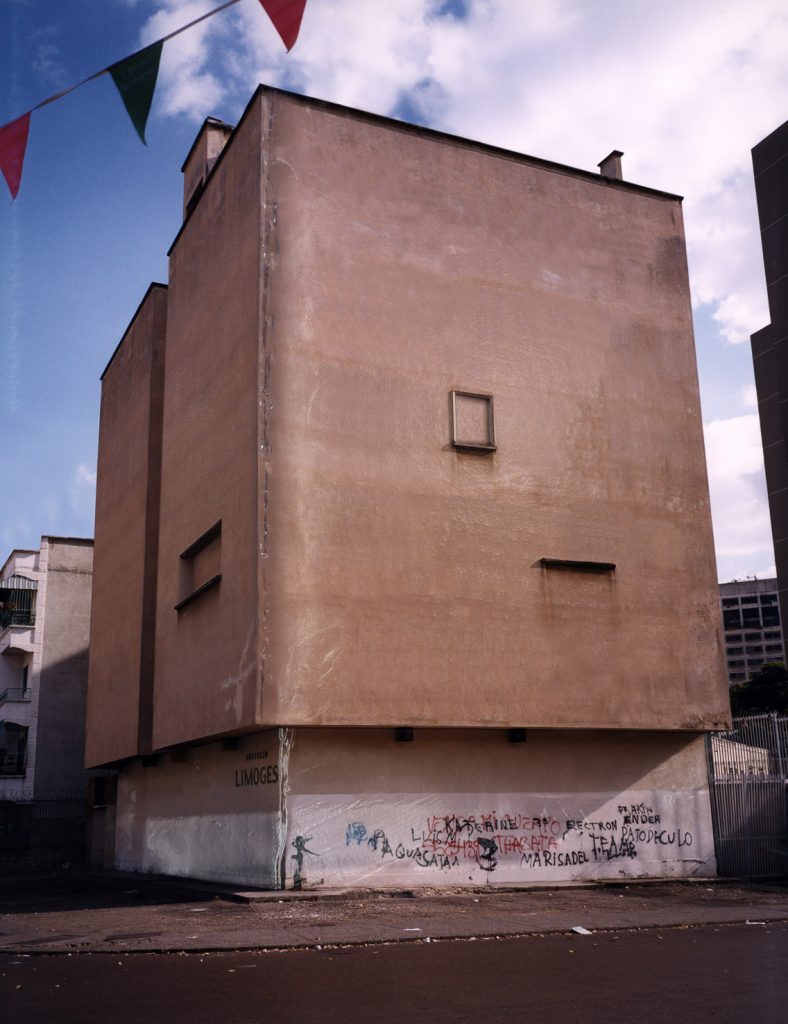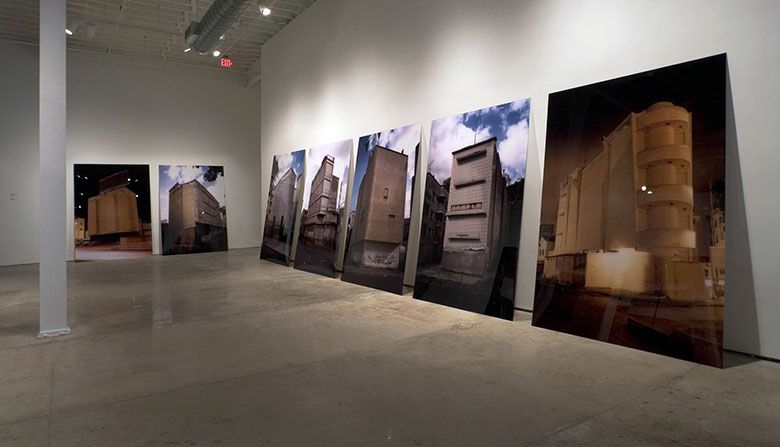Artist:
Alexander Apóstol (born 1969 in Barquisimeto, Venezuela; lives and works in Caracas, Venezuela and Madrid, Spain).
Materials:
7 digital photographs; 200 x 150 cm each.
Description:
“Residente pulido (Polished Residents) [consists] of buildings that were built by Europeans during the [years] of modernity (1930-1960) in Caracas. By deleting all access to the buildings, architecture seems to have lost its function. As antique monoliths, molds of machines, or bunkers prepared for an upcoming disaster, communities are excluded or trapped into the building of a dream that turned nightmare. In its day, the constructions were named after European cities (Meissen, Rosenthal, Limoges, Capodimonte, Sèvres, Royal Copenhagen, and Lladró). Today, these names add a sense of geographic disorientation.”
—”Residente pulido (Polished Resident),” Museo de Arte Contemporáneo de Lima.
“Encompassing photography and video, Apóstol’s oeuvre seeks to expose fractures in the modernist project, both in the artist’s native Venezuela and across South America. Since early in his career, he has concentrated on the iconography of the urban landscape, a tendency exemplified by his series Polished Residents (Residente Pulido, 2001). This set of photographs portrays iconic buildings from 1950s Caracas, but Apóstol digitally altered the images to conceal windows and doors. Built landmarks are thus transformed into impenetrable monoliths that speak to the decadence of a metropolitan project now estranged from its architectural contemporaries.”
—”Collection Online: Alexander Apóstol,” Solomon R. Guggenheim Museum.



